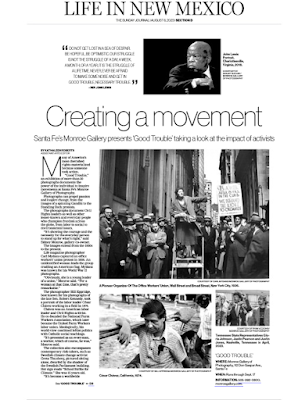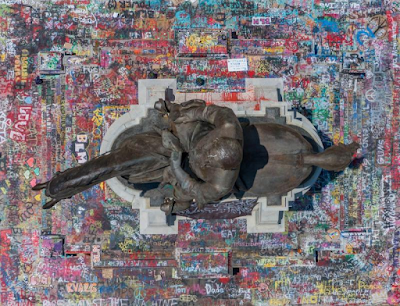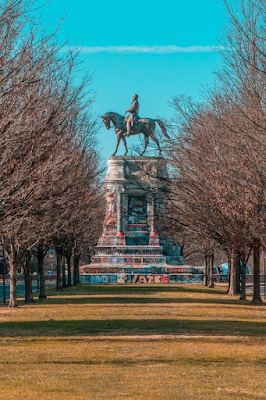August 12, 2023
The outrageous law enforcement assault on the Marion County Record newspaper raises a veritable forest of red flags.
Why would a judge sign off on an apparently illegal search? What type of officials would willingly execute such an abuse of power? Could any convoluted sequence of liquor permit infighting possibly justify such drastic measures? Are we still living in a state and nation where the First Amendment of the U.S. Constitution applies?
We don’t know definitive answers to any of these questions yet, and the story may well still surprise us. In the meantime, the Record itself and Kansas Reflector’s story offer starting points.
This morning, though, I’d like to write about a part of the story that we do know. We know that law enforcement officials raided the office of a news outlet and carted away computers and cellphones. On its own, with no other background or context, this sets an incredibly destructive precedent.
Not just in Marion.
“Newsroom raids in this country receded into history 50 years ago,” said John Galer, chair of the National Newspaper Association and publisher of the Journal-News of Hillsboro, Illinois.
“Today, law enforcement agencies by and large understand that gathering information from newsrooms is a last resort and then done only with subpoenas that protect the rights of all involved. For a newspaper to be intimidated by an unannounced search and seizure is unthinkable in an America that respects its First Amendment rights. NNA stands by its community newspapers and calls upon top officials in Kansas to immediately return any property seized by law enforcement so the newspaper can proceed with its work.”
An attack on a newspaper office through an illegal search is not just an infringement on the rights of journalists but an assault on the very foundation of democracy and the public’s right to know. This cannot be allowed to stand.
– Emily Bradbury, executive director of the Kansas Press Association
Emily Bradbury, executive director of the Kansas Press Association, added strong words on behalf of local outlets: “An attack on a newspaper office through an illegal search is not just an infringement on the rights of journalists but an assault on the very foundation of democracy and the public’s right to know. This cannot be allowed to stand.”
Imagine for a moment that you’re the editor and publisher of a small weekly newspaper somewhere else in Kansas. Imagine too that you’ve been speaking with a source about potential wrongdoing by a prominent resident. That resident happens to have a friendly relationship with the local police department. You know that publishing the story, even in the best of times, will create a firestorm in your little community.
Now imagine that you read the coverage coming out of Marion County. You see that printing such a story — or even reporting it — might put you at risk of being raided. It might put your employees at risk. It might threaten the entire financial stability of your business.
So do you publish the story? Or do you think twice? Do you potentially delay the piece for a couple of weeks until this all blows over?
Well, do you?
That’s the damage already done in Marion. That’s the damage already done to Kansas journalism. No matter how the story shakes out — if officials return all the seized computers and cellphones this afternoon — a message has been sent. That message conflicts with the tenets of an open society. It conflicts with free expression. It shuts down the ability of democracy’s defenders to do their jobs, informing and educating the public.
Or as Record publisher and editor Eric Meyer told us yesterday: “It’s going to have a chilling effect on us even tackling issues.” What’s more, it will have “a chilling effect on people giving us information.”
A toothpaste tube has been squeezed, hard, and there’s no getting all that minty fresh goo back inside its container.
No matter the size of the outlet, no matter the reporter, the memory of this raid will linger. Stories will be slowed or go unwritten. Towns, cities, counties and entire states will lose out on vital knowledge about the misdeeds of powerful people. That’s why I care, and that’s why the Reflector cares. That’s why journalists across this country, when they learn about what happened in Marion County, will care too.
Look, I understand. Journalists and journalism can be pretty annoying at times. But no one should doubt our commitment to doing our best for both readers and our communities. Folks who stand in the way of us doing that job don’t just pick a fight with us. They pick a fight with the people we serve.
One more point. If you revere the Constitution — as so many conservatives and liberals claim to do these days — don’t just sit back and watch. Step up to defend our shared freedoms. Because if the Marion County Record can’t report and print freely, neither can the rest of us.
And neither can you.
Clay Wirestone is Kansas Reflector opinion editor. Through its opinion section, Kansas Reflector works to amplify the voices of people who are affected by public policies or excluded from public debate. Find information, including how to submit your own commentary, here.









